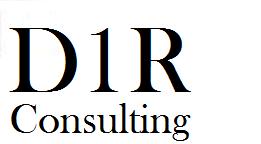Lean - Core Concepts
- Details
- Published: Saturday, 21 January 2012 18:21
- Written by David DeCiero
“Lean” is a term that has been used in manufacturing to identify a form and approach to continuous process improvement. Toyota and other Japanese manufacturers made Lean famous as they climbed the ranks of the car manufacturers. This is not meant to be an exhaustive definition of lean, but a focus on core concepts.
At its core, Lean is about the customer. The key is to do everything based on the customer. This is because ultimately, they decide the success of your business. If a customer will pay for it, then it should be performed in the business. If a customer will not pay for it, then it should not be performed by the business. The best way to imagine this is to have a “little customer” on your shoulder. This way, you can ask this person whenever you are doing something. Ask them questions such as, “Would you pay for this?” or “What do you think?” The point is not to get a little customer, but have them guiding your decisions on products and process, much like the little angels (and devils) that can sit on your shoulder. They are there to remind you of what you are doing and offer a different perspective than you have as the business owner. The customer is central to Lean, you must listen to them and gather their feedback to provide the products and services that they want.
Secondly, Lean is about process improvement. After answering the question of whether the customer will pay for it, there is a continuous focus on making the process of producing that product or delivering that service better. The process can always be optimized to provide more satisfaction and value to the customer. This may seem counterintuitive, since once a process is optimized, it should continue to be that way as long as we follow the standardized process. However, things change. The available resources may change, technology may change, or anything may change. The point is to always search for ways to make the process better, taking advantage of changes as quickly as possible. There are a myriad group of terms associated with process improvement (muda, muri, mura), but we will not go into those at this time.
Thirdly, Lean is about the people in your organization. Lean identifies people as the most valuable resource on the planet. The key is to recognize the talent in your organization and culture it. This will provide your employees with a path to growth and learning and provide them with an incentive to work at their highest level of potential. This equates to having employees focus on the tasks that create value. The concept of busy work or utilizing an employee to less than their full potential has no place in a Lean organization.
This has been an initial discussion of Lean. In a future article, we will discuss process improvement in more detail. These key concepts above, though, should always be kept in mind when wanting to make a more efficient, customer focused business.

